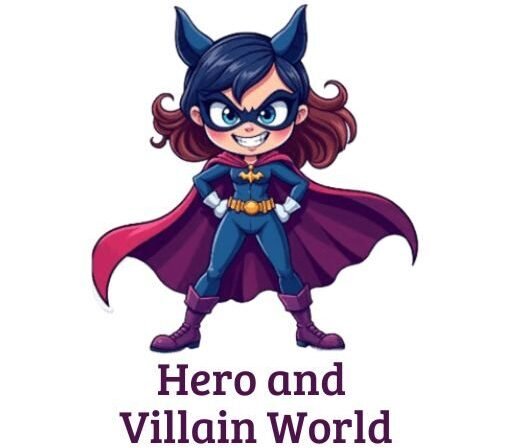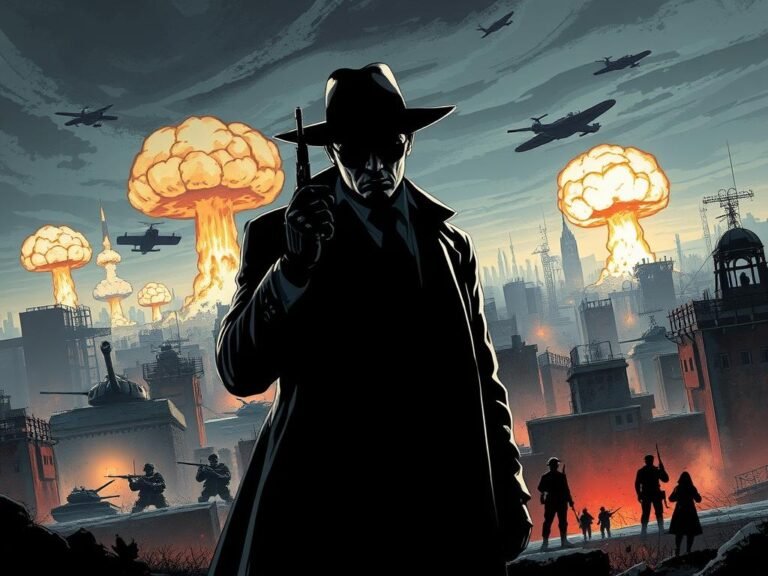The Cultural Importance of Comics
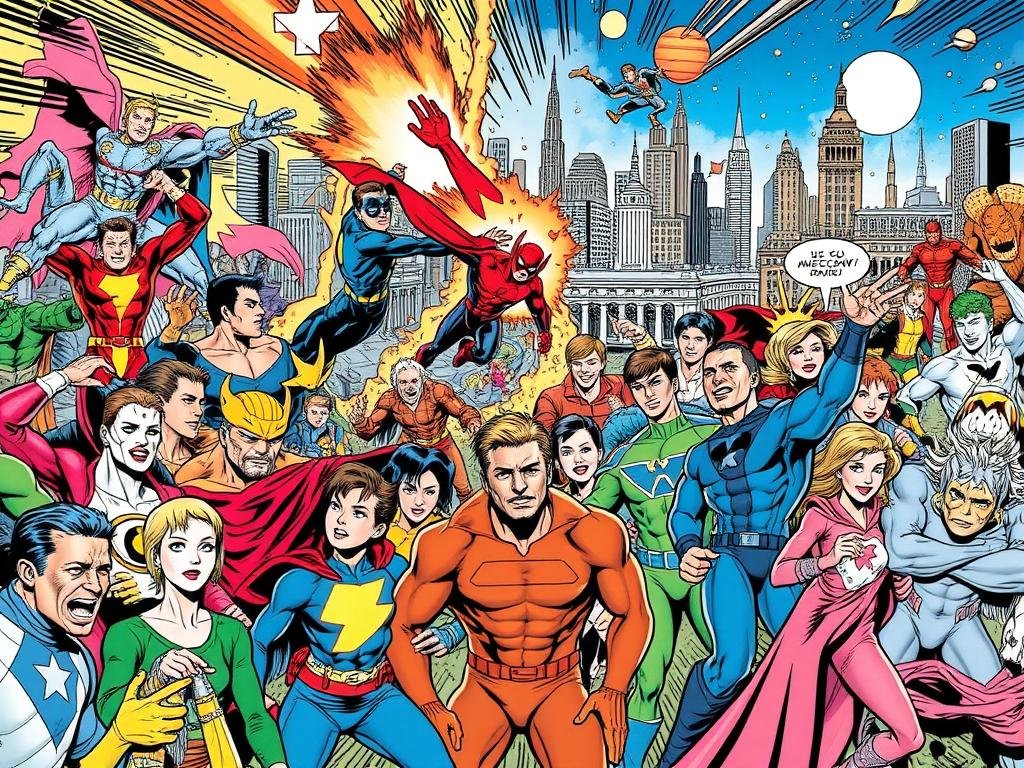
Growing up, I found myself drawn to the vibrant pages of comic books. They weren’t just stories; they were gateways to new worlds. Each panel felt like a window into the artist’s mind, blending art and storytelling in a way that captivated me.
From the early days of newspaper comic strips to the modern graphic novel, comics have evolved into a powerful form of expression.
What makes comics so special is their ability to connect with readers on multiple levels. They combine visual art with narrative, creating an immersive experience.
Over the years, characters like Wonder Woman and Superman have become icons, shaping popular culture and influencing how we see the world.
Today, comics are more than just entertainment. They’re a part of our culture, reflecting the times we live in. Whether it’s through a single issue or a series of panels, comics continue to inspire and engage readers of all ages. Let’s explore how this unique medium has left its mark on history and continues to thrive in the modern era.
A Journey Through Comic Book History
Exploring the roots of comic books takes me back to their humble beginnings in the late 19th century. It all started with newspaper strips, a simple yet revolutionary form of storytelling.
Richard Outcault’s “The Yellow Kid,” first appearing in 1895, marked a turning point. This character became a cultural icon, capturing the imagination of readers across the country.
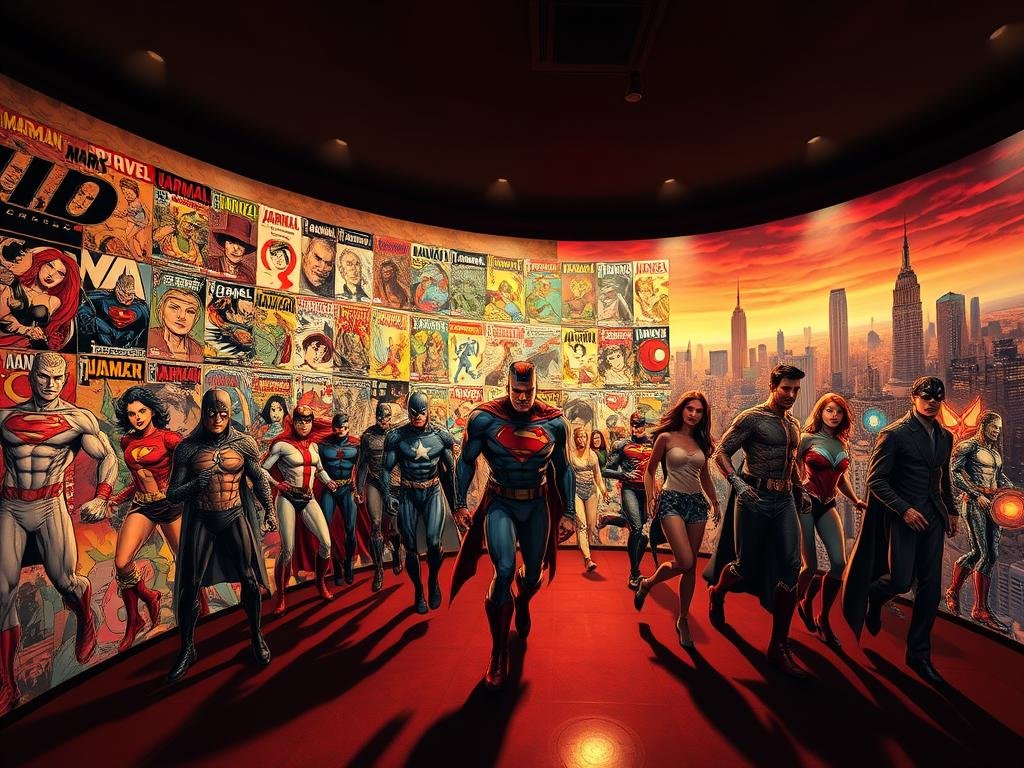
Early comic strips like “The Katzenjammer Kids” brought humor and adventure to daily life. These strips were more than just entertainment; they reflected the culture of the time.
By the 1930s, comic strips evolved into comic books, with “Funnies on Parade” and “Famous Funnies” paving the way for the industry we know today.
Early Beginnings and Newspaper Strips
Newspaper strips were the foundation of modern comic books. They introduced readers to sequential art and storytelling. Characters like “The Yellow Kid” became household names, showing the power of this medium. These strips were a part of everyday life, connecting people through shared stories.
The Birth of the Superhero Era
Everything changed in 1938 with the debut of Superman in Action Comics #1. This event marked the beginning of the superhero era. Superman’s creation by Jerry Siegel and Joe Shuster set the standard for future characters. Soon, Batman, Wonder Woman, and others followed, shaping popular culture and inspiring generations.
| Year | Event | Impact |
|---|---|---|
| 1895 | First appearance of “The Yellow Kid” | Pioneered comic strips |
| 1933 | “Funnies on Parade” published | Transition to comic books |
| 1938 | Superman debuts in Action Comics #1 | Birth of the superhero genre |
Looking back, I’m amazed at how these early comic books laid the foundation for the industry. They weren’t just stories; they were a reflection of the world and its changes.
Today, this history continues to inspire creators and readers alike, proving that comics are more than just a medium—they’re a way of life.
Evolution of Storytelling and Artistic Expression
From hand-drawn panels to digital tools, comic art has come a long way. I’ve always been fascinated by how artists blend traditional techniques with modern innovation. It’s a journey that reflects creativity, technical skill, and a deep love for the craft.
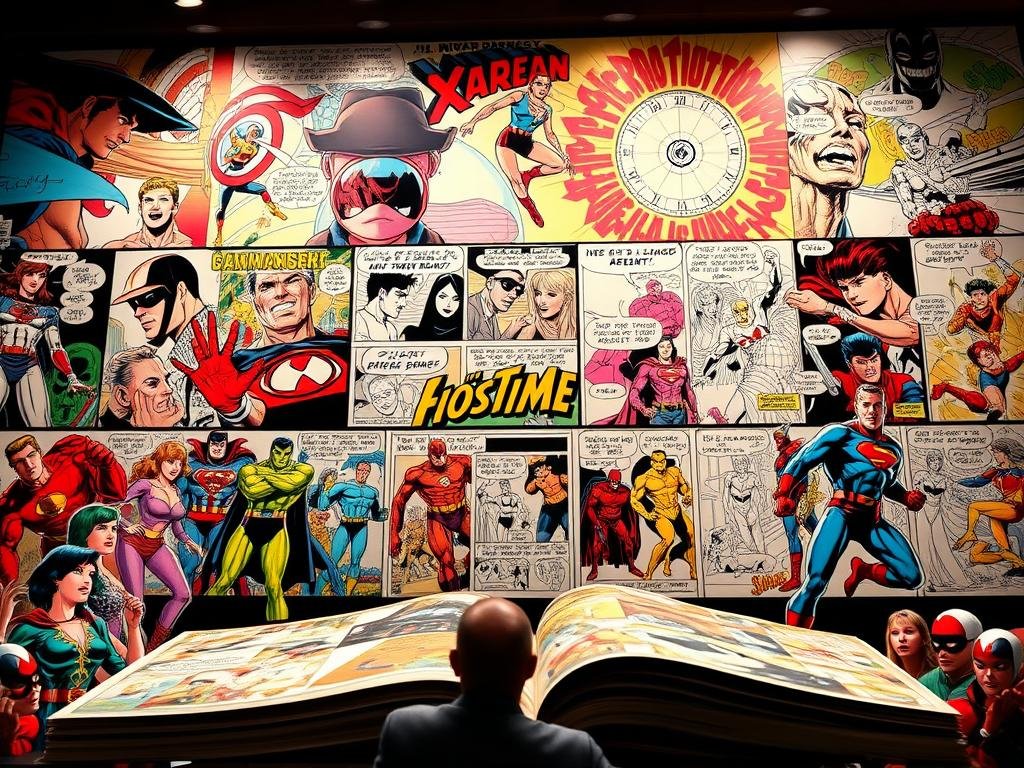
When I first started exploring comic books, I was drawn to the classic penciling and inking methods. The way each line and shade brought characters to life was mesmerizing.
Over the years, I’ve seen how digital tools have revolutionized the art, making it more dynamic and accessible.
One of the most exciting aspects of this evolution is how creators balance tradition and technology. While digital tools offer endless possibilities, many artists still cherish the tactile feel of paper and pencil. This blend of old and new keeps the storytelling fresh and engaging.
From Penciling to Digital Innovation
Transitioning from traditional to digital techniques wasn’t without its challenges. Early comic strips relied on meticulous handwork, but today’s tools allow for faster and more precise creations.
Programs like Photoshop and Procreate have become staples in the industry, enabling artists to experiment like never before.
What’s truly inspiring is how this evolution has expanded the world of comic books. From indie creators to major publishers, everyone benefits from these advancements. It’s a testament to the resilience and adaptability of the community.
If you’re curious about how comic art styles have evolved over time, check out this visual journey. It’s a fascinating look at the techniques and innovations that have shaped the medium.
As we move forward, I’m excited to see how storytelling in comics continues to evolve. Whether it’s through traditional methods or cutting-edge technology, the art remains a powerful way to connect with readers and reflect the world around us.
Exploring The Cultural Importance of Comics
Comics have always been more than just ink on paper; they’re a reflection of the world around us. Growing up, I found myself drawn to their ability to blend art and storytelling into a powerful cultural force.
They’ve shaped my view of society, offering insights into the times we live in.
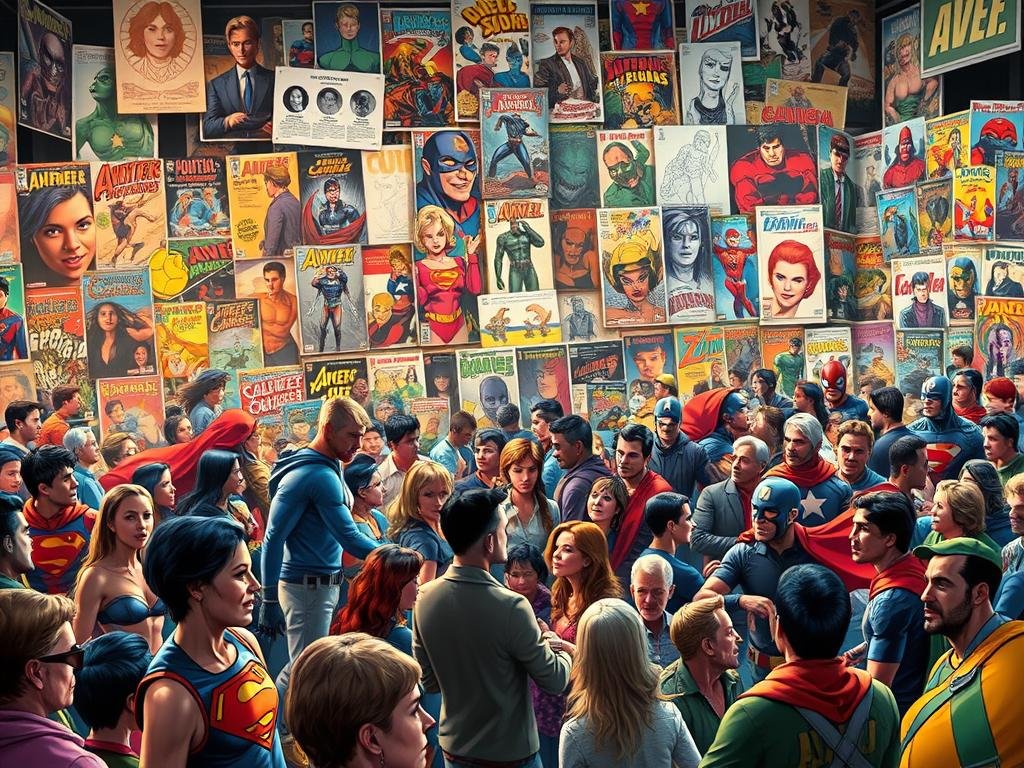
One of the most fascinating aspects of comic books is their dual role. They act as a mirror, reflecting societal issues, while also standing as a unique form of art.
Icons like Superman and Batman have become symbols of hope and justice, influencing popular culture in ways that continue to resonate today.
Impact on Society and Popular Culture
In the 1950s, the Comics Code Authority brought a sanitized era to the industry. Censorship pushed creators underground, where they explored darker, more complex themes.
This period laid the groundwork for later movements, proving that comics could tackle serious issues.
Graphic novels like Watchmen and Maus broke barriers, entering mainstream academic discourse. They showed that comic books could be more than mass-market entertainment—they could be profound literary works. This shift elevated the medium, earning it respect as a legitimate art form.
Artistic Legacy and Modern Interpretations
Today, comics continue to evolve, blending historical tradition with contemporary innovation. Modern artists experiment with styles, pushing the boundaries of what a comic book can be.
This dialogue between past and present keeps the medium fresh and engaging.
From indie creators to major publishers, the industry thrives on diversity. Characters like America Chavez and Kamala Khan reflect a growing acceptance of varied experiences.
This inclusivity ensures that comics remain relevant to readers of all backgrounds.
As I look back, I’m inspired by how comics have transformed over the years. They’ve gone from simple strips to complex narratives, leaving an indelible mark on our culture. Their ability to connect with readers and reflect the world ensures their enduring legacy.
The Influence on Mainstream Media and Entertainment
Watching my favorite comic book characters leap from the page to the screen has been an unforgettable experience.
It’s amazing how these stories, once confined to paper, now dominate movies, TV shows, and even video games. This cross-media journey has reshaped how we consume entertainment.
From comic strips to blockbuster films, the transition has been seamless. I’ve seen characters like Daredevil and Spider-Man evolve from static panels to dynamic on-screen heroes.
These adaptations not only bring stories to life but also introduce them to a wider audience.
Comic Books to Feature Films and TV Shows
The journey from comic books to feature films is a testament to their enduring appeal. I remember the excitement when Daredevil was revived as a Netflix series.
It stayed true to the source material while adding new layers to the story.
Blockbuster adaptations like The Avengers and Black Panther have redefined the superhero genre. They’ve shown that comic book narratives can resonate globally, blending action, emotion, and social commentary.
Merchandising, Video Games, and Cross-Media Adaptations
Successful adaptations don’t stop at the screen. They extend to merchandising, video games, and animated series. I’ve seen how a single character can inspire everything from action figures to immersive gaming experiences.
For example, the Batman: Arkham video game series brought Gotham City to life in a way that honored the original comic book art. These adaptations not only entertain but also renew interest in the source material, keeping the industry vibrant.
As I reflect on this evolution, I’m struck by the impact of comic books on mainstream media. They’ve proven that a great story can transcend its medium, shaping culture and inspiring audiences worldwide.
Comic Conventions, Fandom, and Community Engagement
Walking into a comic convention feels like stepping into a world of endless creativity. The energy is electric, with fans and creators coming together to celebrate their shared passion.
It’s a place where comic book lovers can connect, learn, and be inspired.
One of the most exciting aspects of these events is the sense of community. Whether you’re a long-time reader or a new fan, there’s something for everyone.
Panels and workshops offer insights into the industry, while cosplay brings characters to life in a way that’s truly magical.
The Role of Comicons in Building a Creative Community
Comic conventions like San Diego Comic-Con have become hubs for creative exchange. They bring together artists, writers, and fans, fostering connections that often lead to new projects.
These events are more than just gatherings—they’re incubators for innovation.
I’ve had the chance to attend several conventions, and each time, I’m amazed by the talent on display. From indie creators to major publishers, everyone is there to share their love for the medium.
The conversations I’ve had at these events have shaped my understanding of comic art and its impact on culture.
Cosplay is another highlight. Seeing fans dressed as their favorite superhero or character is a testament to the power of storytelling. It’s a way for readers to express their connection to the story and the art.
These conventions also play a crucial role in boosting the industry. They provide a platform for new voices and ideas, ensuring that comic books continue to evolve.
The relationships formed at these events often lead to collaborations that push the medium forward.
| Event | Highlights | Impact |
|---|---|---|
| San Diego Comic-Con | Panels, workshops, cosplay | Global influence on pop culture |
| New York Comic Con | Artist Alley, exclusive reveals | Showcase for new talent |
| Emerald City Comic Con | Focus on indie creators | Platform for diverse voices |
As I reflect on my experiences, I’m struck by the communal spirit of these gatherings. They’re not just about celebrating comic books—they’re about building a community that supports and inspires one another. This spirit is essential for the future of the medium.
Social Impact, Diversity, and Progressive Themes
Reflecting on the power of comics, I’ve always admired how they tackle real-world issues. They’re not just stories; they’re platforms for change.
From addressing racism to advocating for gender equality, comic books have become a voice for the voiceless.
One of the most powerful aspects of comic art is its ability to highlight diversity. Characters like Kamala Khan and John Stewart have redefined representation in the industry.
Their stories resonate with readers, fostering acceptance and understanding.
Addressing Social Issues Through Graphic Narrative
Graphic novels like Maus and Watchmen have bravely tackled themes of racism, sexism, and political corruption. These works aren’t just comic books; they’re cultural artifacts that challenge societal norms.
I’ve always been inspired by how artists use their medium to spark important conversations.
For example, Maus uses anthropomorphic animals to explore the Holocaust, creating a profound emotional impact. Similarly, Watchmen delves into the complexities of power and morality.
These narratives show that comic strips and graphic novels can be tools for social activism.
Here’s a look at some influential works and their themes:
| Title | Theme | Impact |
|---|---|---|
| Maus | Holocaust, racism | Highlighted historical trauma |
| Watchmen | Political corruption, morality | Redefined superhero narratives |
| Ms. Marvel | Cultural identity, diversity | Introduced first Muslim lead |
These works have reshaped how we view comic books. They’ve proven that the medium can address complex issues while remaining accessible to readers. This blend of art and activism is what makes comics so powerful.
As I look back, I’m struck by how comics have evolved. They’ve gone from simple strips to profound narratives that drive change. Their ability to reflect the culture and inspire action ensures their enduring legacy.
Conclusion
Over the years, my fascination with comic books has only deepened. From early newspaper strips to modern digital art, each phase has enriched my love for this medium.
Iconic characters like Superman and Wonder Woman have shaped culture, influencing everything from movies to fashion.
Today, comics continue to evolve, inspiring new generations with diverse stories and innovative techniques. The Marvel Cinematic Universe and indie creators alike prove that this medium is here to stay.
Its ability to reflect societal changes and spark conversations is unmatched.
As I reflect on this journey, I’m optimistic about the future of comic book storytelling. It’s a testament to the power of art and narrative.
Thank you for joining me in exploring how comics have transformed modern media. Let’s continue to celebrate their cultural work and endless possibilities.
FAQ
When did comic strips first appear in newspapers?
Comic strips began in the late 19th century, with “The Yellow Kid” often credited as one of the earliest examples in 1895.
What marked the birth of the superhero era?
The superhero era started in 1938 with the debut of Superman in Action Comics #1, published by DC Comics.
How has comic book art evolved over time?
Comic art has shifted from traditional penciling to digital techniques, allowing for more dynamic and detailed storytelling.
How have comics influenced popular culture?
Comics have shaped movies, TV shows, video games, and even fashion, becoming a cornerstone of modern entertainment.
What role do comic conventions play in the community?
Events like Comic-Con bring fans, creators, and artists together, fostering creativity and celebrating shared passions.
How do comics address social issues?
Through characters like Wonder Woman and storylines tackling race, gender, and equality, comics have become a platform for progressive themes.
Why are graphic novels considered significant in literature?
Graphic novels combine art and narrative to explore complex themes, earning recognition as a legitimate form of storytelling.
What impact have comics had on mainstream media?
Comics have inspired blockbuster films, TV series, and even video games, expanding their reach into global entertainment.
